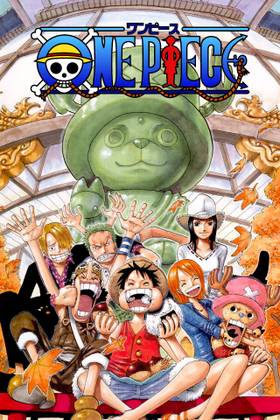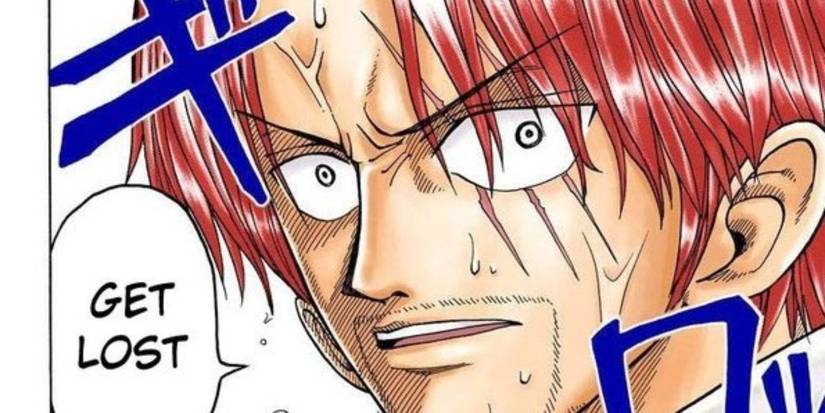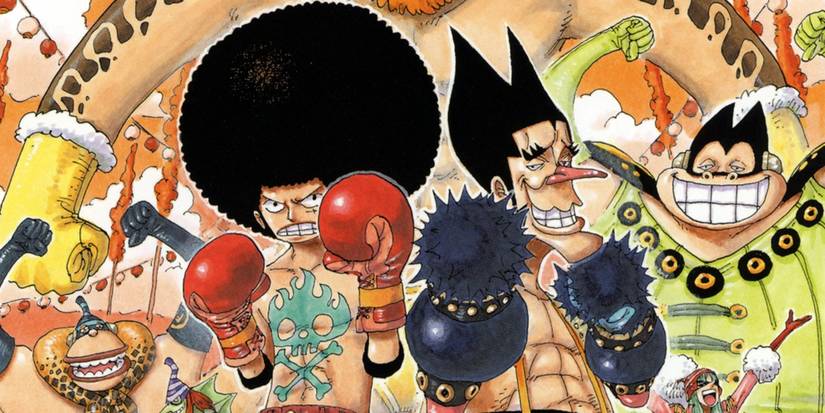
The road to success in manga and anime is never a simple one, and Eiichiro Oda’s One Piece is about as clear an example as possible. The world-renowned franchise has generated billions thanks to Oda’s ingenuity and tireless dedication to creating manga’s most epic adventure. Despite this success, One Piece’s earliest days had some notable failures.
Beyond Oda’s perception of his one-shots not taking off as a young artist, One Piece had its blueprint buried within its earliest iterations, being both versions of Romance Dawn. Featured in both Weekly Shonen Jump 1996 Summer Special and mainline Weekly Shonen Jump, Oda’s Shonen Jump debut fell flat in his eyes. Each release, however, built up his ultimate story.
One Piece’s Prototypes Are Predictably Rough Yet Entertaining
Reading through both versions of Romance Dawn, it was clear that Oda wanted to render an adventure on the high seas. Oda spoke of the experience as “total chaos”, being simultaneously grateful to his fellow assistants for helping him complete it in time, but hardly seeing the final result, released in Weekly Shonen Jump, as ideal.
This interview with the creator, featured in the October 3, 2025 edition of One Piece Magazine, laid out Oda’s overview of the production’s results. Given a two-week deadline to draw a one-shot from scratch, Oda reworked his existing version of Romance Dawn, but instead of the Summer Special for up-and-comers, this was the big-leagues. Oda knew the stakes at hand.
It was total chaos, so I don’t remember the results at all. What mattered more was the relief that somehow we avoided leaving a hole in Jump. That said, I realized that opportunities really can come out of nowhere, and you must have a firm conviction to absolutely seize that moment.
From there, I began coming up with the serialization name “One Piece.” Even though it was rejected a few times during the serialization meetings, finally, one year later, the serialization of one piece began.
-Eiichiro Oda
The results of each endeavor are predictably rough. One can easily spot the more intriguing One Piece elements in Romance Dawn version 1, namely the appearance of Shanks, the Conqueror’s Haki, and Shanks giving Luffy his straw hat. Version 2 is also noteworthy for intentionally swapping out Shanks for Luffy’s grandfather, who would be recreated as Garp in One Piece.
However, each version is laughable at parts. Version 1 features Luffy’s skiff, the Märchen, adorned with four flags stacked atop each other. Version 2’s straw hat retcon as Luffy’s grandfather’s turns the precious hat into a generic heirloom. Both versions push “Peace-Main” pirates as Luffy’s ideal, as if he’s role-playing in a pirate-themed Overwatch clone.
Despite these flaws, each version show innate promise, and evidence of Oda’s bubbling imagination. Each version features a different villain, from Crescent Moon Gally’s generic-looking pirate captain in version 1, to Spiel the Hexagon’s sorcerer spin beating Black Clover’s Yuno to the punch by standing cooly while riding his flying broomstick. Each even feature ostensibly a proto-Nami saving Luffy’s life.
Both versions of Romance Dawn are competently drawn, even if version 2 doesn’t feel like it feels narratively satisfying, but rather, a prologue to something greater. Oda himself indicated this, calling version 1 “too much of a One Piece prototype” in VIZ Media’s release of his one-shot collection, Wanted!: Eiichiro Oda Before One Piece.
One Piece Is Proof an Epic Manga Needs Time to Evolve
Creating a one-shot for a series as intricate as One Piece is an immense task. Conqueror’s Haki, as indicated in Romance Dawn version 1 and then One Piece chapter #1, isn’t mentioned by name until chapter #234. Instances of Haki are scattered further beyond then before characters are even properly trained in its techniques.
Shanks’ straw hat becomes immensely significant in the final release of One Piece, with it being passed down by Gol D. Roger first. The mysterious overarching villain Imu is even seen in possession of a similar straw hat, possibly belonging to Joy Boy, Luffy’s spiritual predecessor. These are connections forged over hundreds of chapters and decades of writing.
The mysterious overarching villain Imu is even seen in possession of a similar straw hat, possibly belonging to Joy Boy, Luffy’s spiritual predecessor. These are connections forged over hundreds of chapters and decades of writing.
Romance Dawn version 1 did not have the pressure of time constraints or an especially high-profile audience, and it benefited from the relaxed expectations. The story itself reads better, aside from awkward quirks like boat accessories or Luffy having a seemingly greater appetite for wanton destruction. It’s funny, and retains the spirit of One Piece, but lacks sufficient direction.
One Piece chapter #1 focuses more on Luffy’s character foundation before starting his journey, instead of a collection of character traits and predictable backstory interacting with the worlds of Romance Dawn. Fans see Luffy’s past, an extended look at his childhood, and despite more of Shanks’ crew being present, fans get to know Shanks more intimately too.
This is a common thread for manga creators trying to tell a story they desperately want out in the world. Before the success of Golden Kamuy, creator Satoru Noda brought his passion for ice hockey to the world with Supinamarada! It was a commercial failure, but its concepts laid the foundation for its acclaimed revival after Golden Kamuy with Dogsred.
Oda Is the Master of the Long Game With One Piece
To think that Oda’s failures have ended with Romance Dawn or his previous one-shots, is misguided at best, and ignorant at worst. His world-building exercises can often feel bloated, with the latest Prince Loki sequence feeling especially lengthy on top of repeated delays. While the delays aren’t Oda’s fault, it can sometimes feel disengaging.
Yet despite these flaws, fans will readily admit that Oda makes use of even his low points. One clear example is the commonly-hated Long Ring Long Land Arc, which infamously didn’t do much for the overarching plot. But with Rocks D. Xebec using the arc’s Davy Back fights and its connection to Davy Jones, it’s now inextricably linked.
Davy Back Fights, first mentioned in One Piece chapter #306, were most recently incorporated in chapter #1155, a full 21 years later. The nature of the competition allowed Rocks D. Xebec to compete with other pirates and their crews, gambling his roster and flag in the process, ultimately winning big and bolstering his forces.
Whether it’s the case of arcs blurring the lines of filler and canon, or frustrating flashbacks, the lesson to be learned while reading One Piece is patience. It’s important for any series, but with one spanning nearly 30 years, it’s worth countless Berries to the discerning sailor exploring what the New World has to offer.
One Piece is far from the creation that Romance Dawn was. Peace-Mains and Morganeers don’t exist anymore; fans can easily discern the swashbucklers from evil pirates, as Oda has nailed that distinction. His failures held kernels of creativity, allowing One Piece to evolve into a masterpiece. The old DNA must never be forgotten, as it’s what made One Piece possible.

- Created by
-
Eiichiro Oda
- First Film
-
One Piece: The Movie








